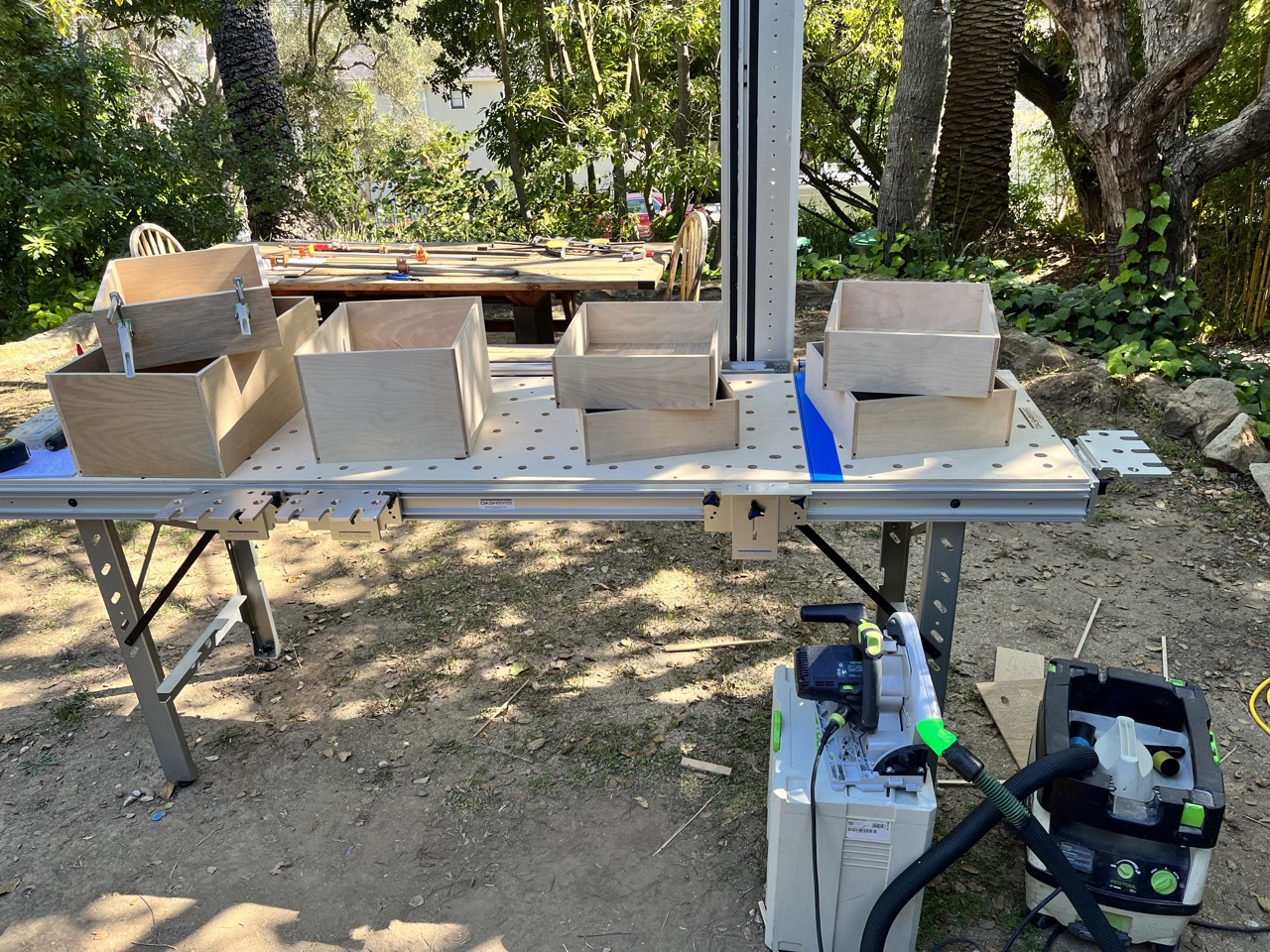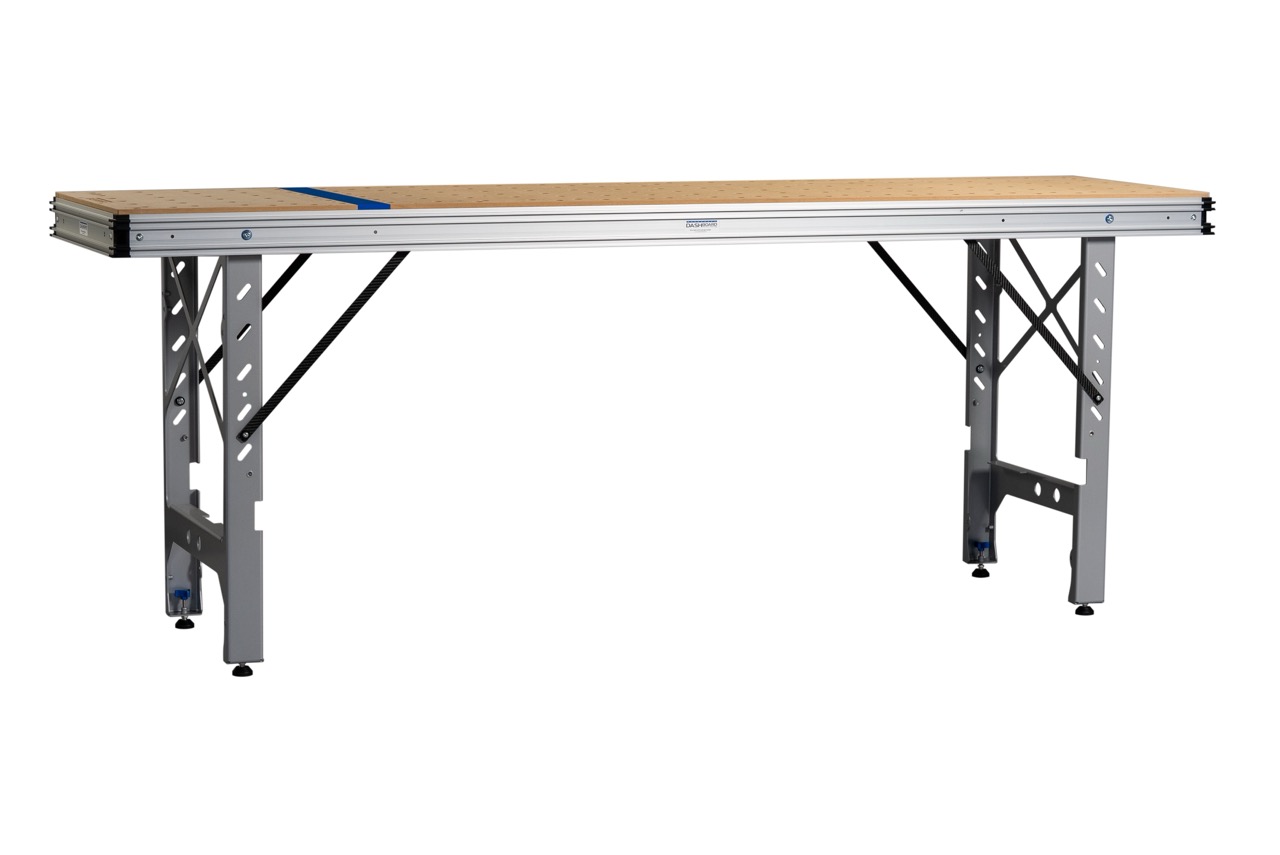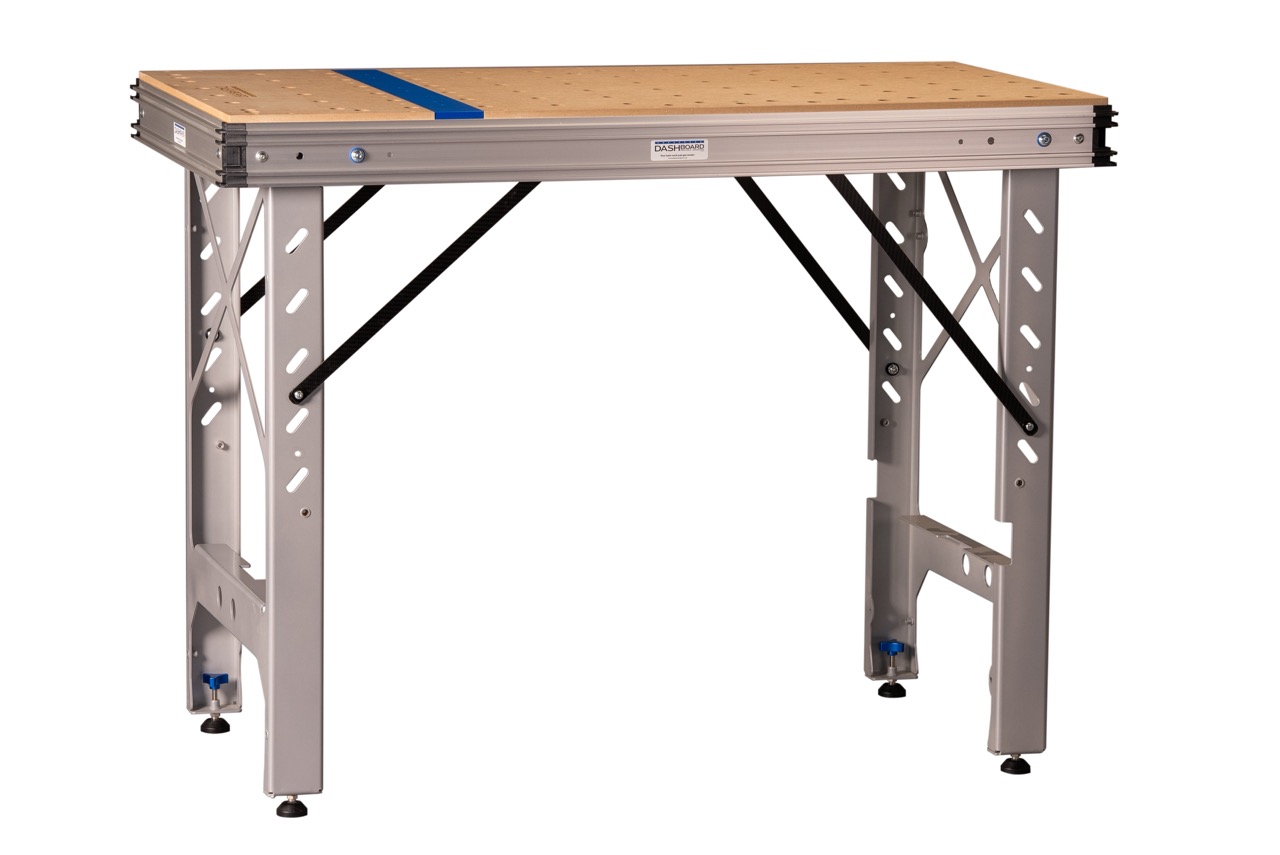Why Choose When You Can Have Both?
Here's what nobody tells you about the portable vs. traditional workbench debate: modern engineering has made it obsolete. Today's best portable workbenches deliver traditional-level stability, precision within 0.004", and setup times under 60 seconds.
You no longer sacrifice performance for portability.
After testing dozens of systems, one thing is clear, the right portable workbench eliminates compromise.
You get the rock-solid stability needed for fine woodworking plus the flexibility to work anywhere.
The Numbers That Matter
Setup and Storage Reality
Traditional Workbench:
- Permanent footprint: 24-88 square feet
- Setup time: One-time installation (4-8 hours)
- Storage when not in use: Not applicable
- Moving difficulty: Requires disassembly, truck, multiple people
Portable Workbench (Dash-Board Gen 2):
- Working footprint: 16 square feet
- Setup time: About 60 seconds
- Storage footprint: 3.5" x 24" x 93" (smaller than a folded ironing board)
- Moving difficulty: One person, fits in SUV or truck bed
Precision and Stability Comparison
Traditional Workbench:
- Weight: 200-400 lbs
- Cutting accuracy: Depends on user-added guides
- Maximum load: 500-1,000 lbs
- Vibration dampening: Excellent due to mass
Dash-Board Portable System:
- Weight: 65 lbs
- Cutting accuracy: 0.004" with integrated guide system
- Maximum load: 400 lbs distributed
- Vibration dampening: Engineered through triangulated aluminum frame
The key difference?
Traditional benches achieve stability through mass. Modern portable benches achieve it through engineering—aerospace-grade aluminum extrusions, precision-machined connections, and physics-based design.
Real Work Capabilities: What You Can Actually Build
Sheet Goods and Cabinet Making
Traditional benches struggle with full sheets. Their fixed height and limited support area make handling 4x8 plywood awkward.
Most woodworkers add outfeed tables or separate cutting stations.
The Dash-Board system excels here:
- Integrated guide rail brackets maintain perfect 90° cuts
- Replaceable cut strips protect the work surface
- Expandable design handles full sheets solo
- Track saw integration eliminates table saw needs
Fine Furniture and Joinery
Traditional benches historically dominated furniture making through massive wooden vises and bench dog systems.
But modern portable systems now include:
- 20mm dog hole patterns matching traditional spacing
- Vertical clamping capabilities
- Rock-solid work holding through engineered clamping
- Height adjustability for optimal ergonomics
The difference in 2025? Portable benches handle 95% of furniture-making tasks identically to traditional setups. Only specialized operations like heavy timber framing still favor permanent benches.
Cost Truth: Total Investment Analysis
Traditional Setup True Costs:
- Quality bench: $2,000-5,000
- Required shop space (200 sq ft): $2,400/year in urban areas
- Dust collection system: $1,500
- Additional outfeed support: $500
- Total first-year cost: $28,000+
Dash-Board Complete System:
- Workbench with accessories: $3,998
- Storage space needed: Existing closet or garage wall
- Dust collection: Portable unit ($300) or existing shop vac
- Additional support: Built into expandable design
- Total first-year cost: $4,298
The math is stark. Unless you already own dedicated shop space, portable systems save $20,000+ in the first year alone.
The Multi-Location Advantage

Traditional benches lock you into one workspace. Dash-Board users report working in:
- Garage (weekdays)
- Driveway (weather permitting)
- Client locations (custom installations)
- Basement (winter months)
- Job sites (professional contractors)
This flexibility translates to real income. Cabinet installers charge premium rates for on-site customization. Furniture makers demonstrate techniques at craft fairs. Hobbyists help friends with projects.
Try that with a 400-pound traditional bench.
Modern Features Traditional Benches Can't Match
Instant Precision
The Dash-Board's guide rail system delivers repeatable 0.004" accuracy immediately. Traditional benches require adding aftermarket guides, shims, and constant calibration checks. Built-in precision saves 10-15 minutes per project.
Replaceable Surfaces
Instead of apologizing for saw kerfs scarring your bench, flip or swap the cut strip in 30 seconds. Traditional bench tops require periodic flattening with hand planes—hours of work.
Tool Integration
T-track accessories, guide brackets, and measurement systems integrate seamlessly. Traditional benches need retrofitting for modern power tools, often compromising their original design.
Weather Resistance
Aluminum and composite construction means Dash-Board systems work outdoors without concern. Traditional wood benches require climate-controlled environments or suffer warping, cracking, and joint failure.
The Dash-Board Difference: Engineered for Everything
Here's why Dash-Board owners stop debating portable vs. traditional:
Stability Without Mass: Our patented leg design and aluminum extrusion frame create working stability equal to benches 5x heavier. No wobble, no deflection, no excuses.
Precision Built In: Guide rail brackets maintain perfect perpendicular cuts. The rip gauge ensures exact measurements. Every accessory enhances accuracy rather than approximating it.
Expandable Platform: Start with the bench. Add guide brackets for precision. Include Track Stars for extended support. Build your perfect system over time without starting over.
60-Second Setup: From truck to cutting in one minute. No assembly, no tools, no helper needed. Traditional bench setup takes hours and often requires professional installation.
Making the Smart Choice
The portable vs. traditional debate assumes you must sacrifice something. Modern engineering proves otherwise.
Today's best portable workbenches—specifically the Dash-Board system—deliver:
- Traditional-level stability and precision
- Portability that enables new income streams
- Space efficiency that saves thousands annually
- Modern features traditional benches can't match
- Professional-grade capabilities at accessible prices
Stop choosing between portable and traditional.
The Dash-Board gives you both. Set it up in your garage Monday, take it to a job site Tuesday, and demonstrate at a craft fair Saturday.
Try that with a traditional bench.
Explore the complete Dash-Board system and discover why thousands of woodworkers stopped choosing between portable and permanent.
Frequently Asked Questions
Can the Dash-Board really replace my traditional workbench completely?
Yes, for 95% of woodworking tasks. The Dash-Board handles everything from precision sheet goods to furniture making. Only specialized work like heavy timber framing or traditional hand-tool-only workflows might benefit from a dedicated traditional bench.
How stable is a 65-pound bench compared to a 300-pound traditional bench?
The Dash-Board's engineered aluminum frame and triangulated design create stability equivalent to benches 5x heavier. The key is physics-based engineering rather than mass. Users report no wobble or deflection even during heavy planing operations.
What happens when the replaceable cut strips wear out?
Cut strips flip for a fresh surface, doubling their life. Replacement strips cost $33-39 and swap in 30 seconds. Compare this to traditional benches that require hours of hand planing to flatten scarred surfaces.
Can I really set this up by myself in 60 seconds?
Yes. The Dash-Board unfolds and locks into position without tools. From folded in your truck to ready for cutting takes under a minute. Adding accessories like guide rails takes another 1-2 minutes max.
Is the Dash-Board worth it if I already have a small traditional workbench?
Many woodworkers use both—Dash-Board for sheet goods, precision cuts, and portable work, while keeping a smaller traditional bench for specialized hand tool work. The Dash-Board often becomes the primary bench due to its versatility and modern features.









.jpeg)
.webp)
